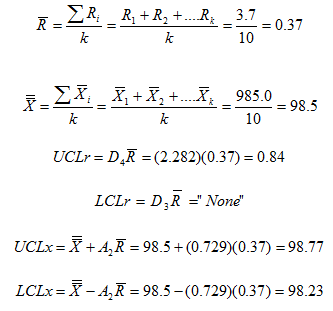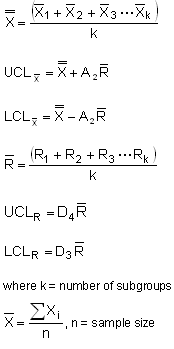

It can be estimated either using the ranges or using the standard deviations of the individual samples. Sigma=deduce, sbar, or rbar - This option specifies how standard deviation of the underlying quality characteristic should be computed. Mu=deduce or realcons - This option specifies the mean of the underlying quality characteristic. If ignore=true, all missing items in X are ignored. So, if ignore=false and X contains missing data, the XBarControlLimits command returns undefined. Missing values are represented by undefined or Float(undefined). Ignore= truefalse - This option controls how missing values are handled by the XBarControlLimits command. The default value is 0.9973, corresponding to a 3 sigma confidence level. The options argument can contain one or more of the following options.Ĭonfidencelevel= realcons - This option specifies the required confidence level. If X is a single data sample, the second parameter n is used to specify the size of individual samples.Īll computations involving data are performed in floating-point therefore, all data provided must have type realcons and all returned solutions are floating-point, even if the problem is specified with exact values.įor more information about computation in the ProcessControl package, see the ProcessControl help page. Note, that the individual samples can be of variable size. Each value represents an individual observation.

The first parameter X is either a single data sample - given as a Vector or list - or a list of data samples. Unless explicitly given, the mean and the standard deviation of the underlying quality characteristic are computed based on the data. The XBarControlLimits command computes the upper and lower control limits for the X-bar chart. (optional) equation(s) of the form option=value where option is one of confidencelevel, ignore, mu, or sigma specify options for computing the control limits Compute control limits for the X-bar chart


 0 kommentar(er)
0 kommentar(er)
